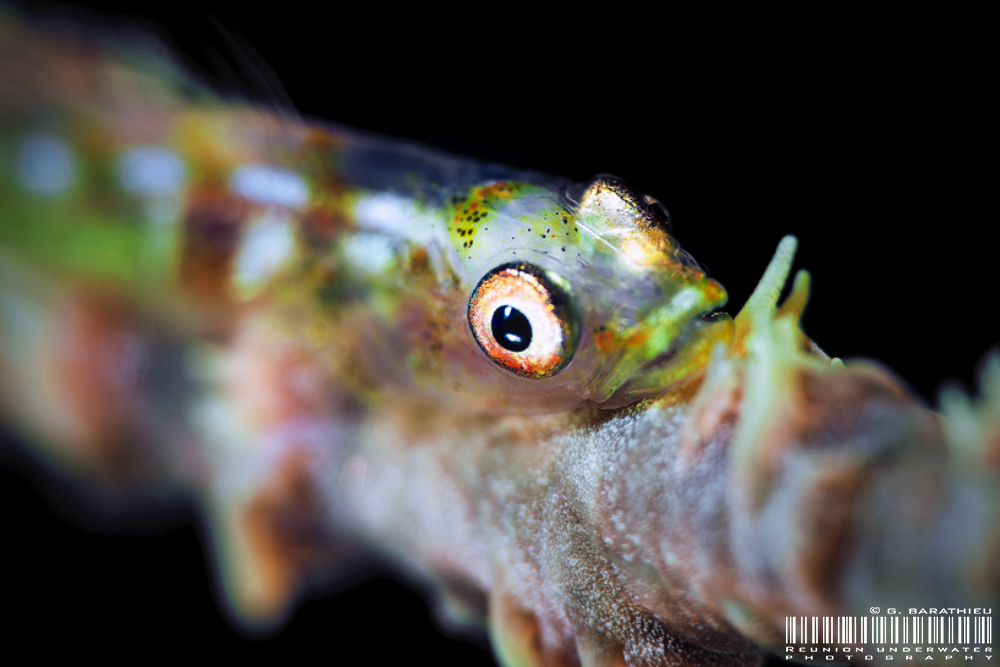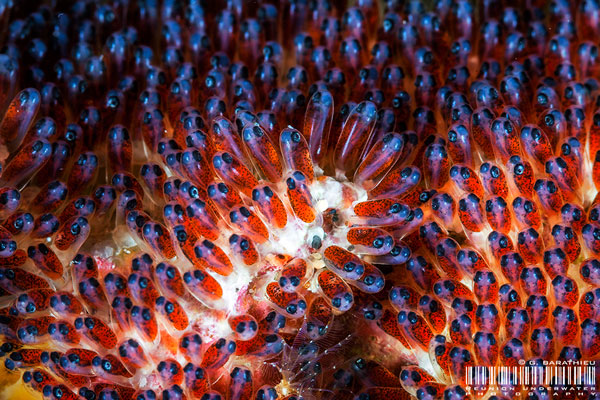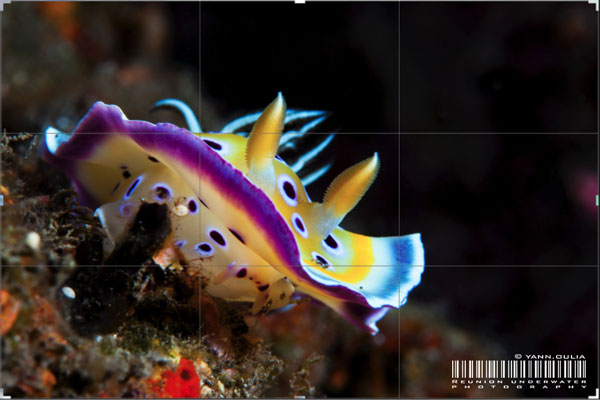
Composition is paramount in underwater macro photography. Poor composition can quickly make a photo of a very interesting subject look drab and boring or give it the spark to stand out from all the others.
It is essential to always be aware of composition when thinking about your shot – even before you move into shooting range. Most good underwater photographers will know the composition, settings and strobe position they will be using before even looking through the viewfinder.
Here are 3 crucial rules and quick guide for macro composition. Keep these in mind on your next trip and you’ll be sure to bring home some great images!

1) The Basics
The best macro compositions depict the subject from the front or the side view (profile).
We all know that harrassing marine life is never acceptable. Along these lines, no one wants to see a photo of a fleeing subject (typically from the back or as it moves in avoidance). If the subject is not interested in staying in place for a photo – move on. Experienced divers and photographers can easily tell when a subject has been manipulated, so don’t insist on capturing those images. Instead, spend your limited bottom time with more willing subjects.
Another major rule is never to shoot a subject from above, as it tends to make the subject look flat in the image. A careful approach is best, making sure to get low and get close!
Harlequin Shrimp (Hymenocera picta)
2) Composition
The most important rule of composition is to avoid placing the focal point of your subject (or all of your subject) in the center of the frame. It is much better to use what is called the Rule of Thirds, where you place this focal point at the intersection of one of the third lines.
Along these lines, it is important to leave some open space in front of the subject. For example, if the subject is facing right, there is open space to the right, as in the photos below. This is sometimes referred to as “swim space” or “negative space”. And while it important to leave some space, too much negative space will make the subject too small in the frame.
In the photos below, the negative space is on the right side of the subjects, in front of the faces. Notice that the negative space takes up only about 1/3 of the frame while the subject takes up 2/3 of the frame. You don’t want to use more negative space than that, as you will lose detail and focus on the subject.
Twin chromodoris (Goniobranchus geminus)
Large toothed cardinalfish (Cheilodipterus macrodon)
3) Depth of Field
It’s common to think that photography is a two-dimensional art, but good photographers strive to create three dimensions !!!!!!!
Depth of field gives relief (aka depth) to the picture. Very shallow depth of field can also be used to highlight a specific point of a photo, like the eyes of a fish. This is most common when photographing a subject from very close and often with a diopter. The further you move back from the subject, the more depth of field is natually included in the image.
Shallow depth of field is particularly useful if you have a background that is distracting and drawing attention from your subject. You can experiment with this by testing your camera and lens at different focal distances to find a style that works for you.

Whip coral goby (Bryaninops yongei)
In the photo above, I chose a very short depth of field in order to highlight the eyes of the gobi.
Crinoid Shrimp
Conclusion
These are the basic rules to capture a great macro shot.
But like with many rules in art, they exist so that you can bend them. Each subject, enviroment and shooting style will dictate the use of different rules, but with these basic tips you will be well on your way to bringing home some great shots.
Juvenile Emperor Angelfish
Also by Gaby Barathieu
Further Reading
About the Author
Gaby Barathieu is a passionate underwater photographer based on Reunion Island. He and photographer Yann Oulia run the Reunion Underwater Photography website and Facebook page, sharing the incredible diving and wildlife encounters in the waters near their home. View their photography at www.RUP.re or on their Facebook Page.












